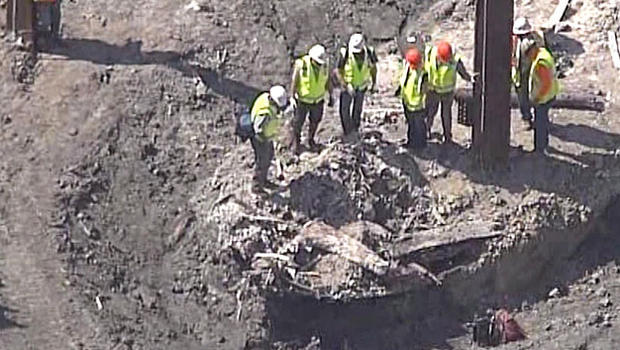Stand down Boston Harbor Tea Party, there’s a new story in town. On May 25th, 2016, a sunken, burned ship had been uncovered during a construction project in Boston’s Seaport District. Dating back to the 1800s, this ship is a rare and remarkable find, according to the city’s archaeologists.
One of these archaeologists, by the name of Joe Bagley, said that it is the first time that a shipwreck has been found in that particular section of the city. It is also, he added, the second one found on land that was filled in to expand the city’s footprint. Furthermore, unlike most other wrecks, the cargo inside the ship’s hold was mostly intact.
The cargo turns out to be lime, a material used for masonry and construction. Lime would have become unusable once it got wet, so the cargo had been left inside the ship, explained Bagley. This is pretty remarkable. At the time, ships would have been completely scavenged of their valuables within days of being wrecked.
It is likely that the origin of the lime is the state of Maine and that the ship with its load was brought to Boston during a 19th-century building boom, Bagley said. It is interesting, he noted, that the discovery of this ship coincides with the current building boom in the city.
The vessel, which appears to have been partially burnt, was uncovered during the construction of a seventeen-story office building. Fortunately, the company working at the site, Skanska, halted construction so that archaeologists could arrive and examine the site. When asked about the find, Shawn Hurley, a Skanska executive, said work was halted for almost a week because of the find. Seemingly unperturbed by the delay, he added, “There are certainly impacts, but we’ll work through them.”
Before it was filled in with debris, the area was once mudflats that alternated between dry land and water, depending on the tides. So, ships “kind of sailed right over” the site, Bagley said. In the late 1800s, the decision was made, and that section of Boston Harbor was filled in.
The area was once mudflats that alternated between dry land and water based on the tides, so ships “kind of sailed right over” the property, Bagley said. In the late 1800s, that section of Boston Harbor was filled in. It was not the prettiest section of the city. Even in 1968, the area was notorious for being rotten. When Mayor Kevin White moved into the new Town Hall and saw the literally rotten buildings, he started the planning to revitalize the district. A later mayor, a Tom Menino, was the one to prioritize the project and see it completed. Now, it is home to office buildings, expensive condos, and upscale restaurants.
There is even construction to make the area more residential—by the same company that found the boat, Skanska. It’s not only this company but more that plan on building apartment complexes and condos for the people who work in the Seaport District.
The lime is not the only item to have interested archaeologists. Other artifacts have been uncovered near the vessel: a shattered ceramic pot, a knife, construction equipment, and loose nails. They are currently undergoing examination by researchers.
Both the cargo and the artifacts are important, however. “They’re really part of the same narrative of Boston growing as a city,” Bagley said. It says a lot about the history behind Boston city, which is 386 years old. “To me what it says is that history is everywhere in Boston—sometimes we have to dig a little deeper to find it,” he added.
Lead image: Youtube
